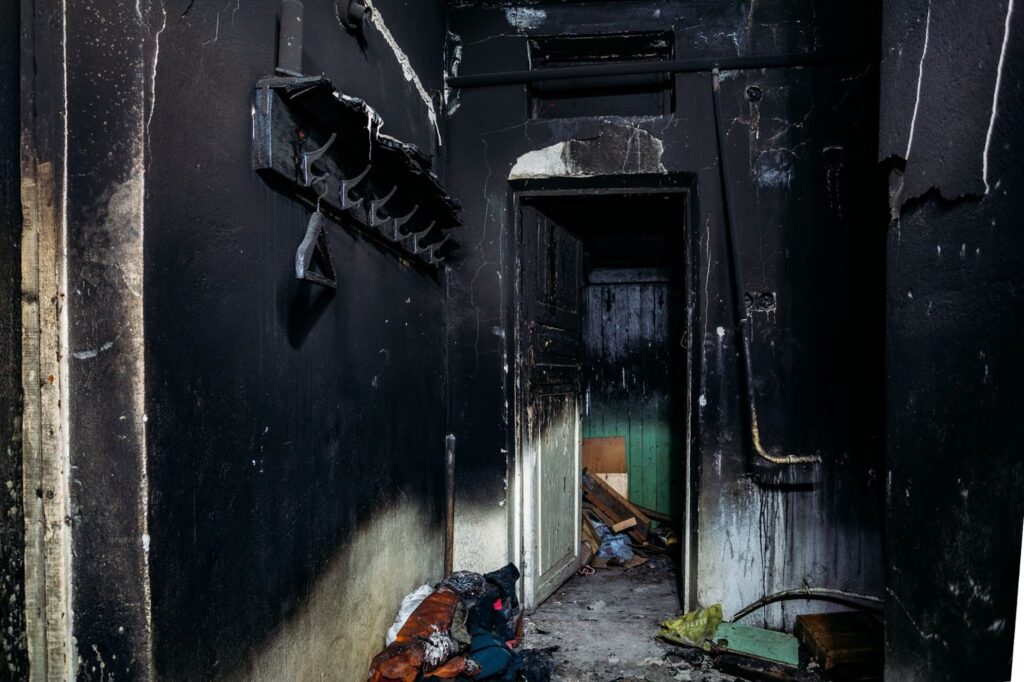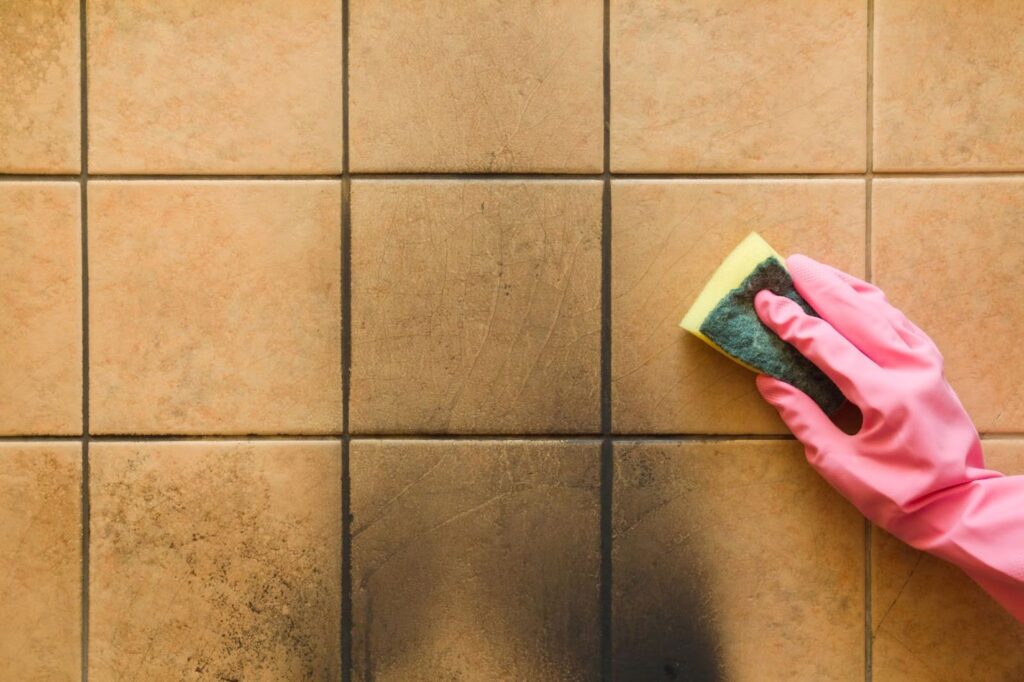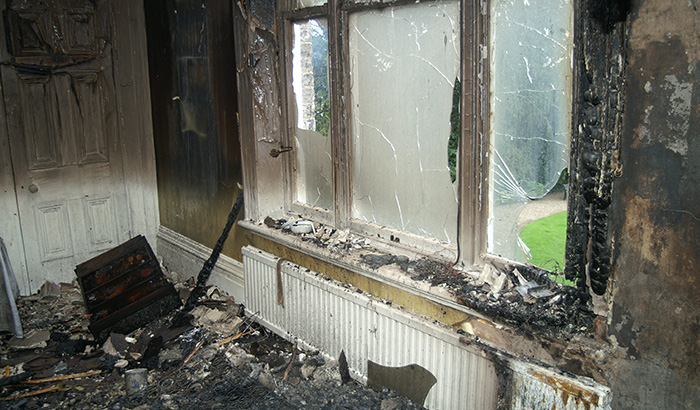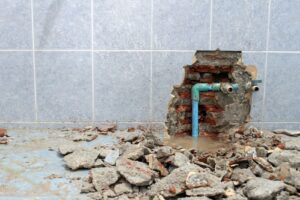Experiencing a fire in your home is a physical and emotional ordeal, particularly when it comes to the damage inflicted on personal possessions. These items are often irreplaceable and imbued with sentimental value; they represent memories and milestones in our lives. The loss or damage of such personal items is deeply distressing.
However, in the aftermath of fire damage, it’s important to remember that you can salvage, restore, and even protect some items from future incidents. Recovering these valuables requires a careful and sensitive approach, balancing the urgency to rescue what’s important with the need to ensure personal safety.
This blog will share essential tips for effectively salvaging your possessions after a fire. These guidelines will help you navigate the challenging process of reclaiming and restoring as many of your valuable personal items as possible.
1. Prioritize safety while assessing the scene
Before attempting to salvage possessions from a fire-damaged area, your first concern must be your safety. Entering a fire-affected zone without proper precautions is dangerous because of structural weaknesses and hazardous materials.
Wearing protective gear
Equip yourself with appropriate protective gear before entering the area. This includes heavy-duty gloves to protect your hands from sharp objects and soot, an N-95 respirator mask to avoid inhaling any toxic particles, and sturdy footwear to safeguard against nails and other sharp debris.
Identifying potential hazards
Be vigilant for various hazards in a fire-damaged area. Look out for weakened floors and ceilings that could collapse under weight. Be cautious of exposed wires and damaged electrical appliances, as they pose a risk of electric shock. Additionally, be aware of water that may have been used to extinguish the fire, as it might make surfaces slippery and hide sharp objects.
Remember, if the structural integrity of the building is in question or if there are significant electrical or chemical hazards, it’s crucial to wait for a professional assessment before entering. Your safety is more important than any possession. Only proceed when it’s clear that the area is safe to enter.

2. Prioritize items for salvage
After ensuring your safety, the next step in recovering your possessions is prioritizing which personal items to salvage first. This is a challenging task, especially when balancing the sentimental value of items with their monetary worth.
Sentimental value vs. monetary value
Begin by identifying items with significant sentimental value, such as family heirlooms, photographs, or keepsakes. These items carry emotional weight that surpasses their monetary value. Next, consider items of high monetary value necessary for your day-to-day life, such as important documents, electronics, and furniture.
Balancing emotional desires and practical necessity
Strike a balance between salvaging items with emotional significance and those necessary for practical purposes. While it’s natural to want to save sentimental items, you should also focus on recovering items that will help you in the immediate aftermath of the fire, like identification documents, insurance papers, and necessary clothing.
3. Clean and restore items
Salvaging and restoring your possessions after a fire is a delicate process. Soot and smoke cause significant damage, but you can save many personal items with the right approach.
While cleaning and restoring items after a fire is a painstaking process, it’s often possible to salvage much of what might initially seem lost. When in doubt, especially for valuable or sentimental items, consult professional restoration services to ensure the best care and recovery possible.
Cleaning soot and smoke
Soot and smoke residue is often acidic and, if not promptly addressed, causes further damage. For hard surfaces like furniture and countertops, use a dry soot remover sponge to gently lift soot. Avoid using water initially, as it spreads the soot around instead of cleaning it up.
Once you have removed the soot, clean the surface with a mild detergent and then dry thoroughly. Professional dry cleaning is often the best option for clothing and textiles, as they have specialized processes for treating fire-damaged fabrics.
Handling delicate items
Electronics and documents require special care. It’s best to consult with a professional for electronics, as DIY cleaning might cause more harm. Smoke can corrode and damage the internal components, so professional cleaning is a better option.
For documents and books, gently remove surface soot with a dry sponge or soft brush. If documents are wet, freeze them in a frost-free freezer to prevent mold growth and consult with a document restoration professional.
Gentle handling
Always handle your possessions gently to avoid further damage. Soot particles are fine and can easily penetrate surfaces, making them harder to clean if mishandled. Be patient and gentle in your cleaning efforts.
Professional restoration services
Consider professional restoration services for severely damaged items, especially those with sentimental value. These experts have specialized techniques and equipment to restore items affected by fire damage. They handle a range of items, from artwork and antiques to electronics and important documents. Professional restorers are also able to assess whether an item is salvageable or if it’s safer to replace it.

4. Document and value damaged items
In the aftermath of a fire, properly documenting and valuing your damaged possessions is a critical step when it comes to insurance claims and potential reimbursement. Adequate documentation and valuation of fire-damaged items streamline the insurance claim process, helping you receive fair compensation for your losses.
Documenting fire damage for insurance
Start by taking clear photographs or videos of the damaged area and each affected item. Capture different angles to show the extent of the damage. Accompany these visuals with written descriptions, noting each item’s make, model, age, and condition before the fire. This detailed documentation provides a clear record of your losses for your insurance carrier to reference.
Assessing the value of lost or irreparable items
Determining the value of damaged items is sometimes challenging, particularly for those that are lost or beyond repair. Receipts or bank statements showing the purchase price are one way to establish value. For older items, estimate their current market value or replacement cost. If you’re unsure, consider consulting with a professional appraiser, especially for valuable items like jewelry or antiques.
Keeping a detailed inventory
If you haven’t already, start compiling a list of all your significant possessions, along with their estimated values and any proof of purchase. This inventory will not only aid in the current claim process but will also be a crucial reference for any future incidents.
Cataloging and valuing damaged items
When cataloging damaged items, organize them into categories (electronics, clothing, furniture, etc.) for easier processing. Be as specific as possible in your descriptions and valuations. For items that are part of a set (like dining chairs or a suite of furniture), note that the value of the entire set may be affected even if only one piece is damaged.
5. Seek professional help for valuables
In the wake of a fire, certain high-value possessions may require the expertise of professional restoration services. These experts have the skills, tools, and knowledge to restore items to their pre-fire condition or as close to it as possible.
When to seek professional help
If you have significant monetary or sentimental possessions, such as fine art, antiques, or important legal documents, it’s advisable to consult with professionals. Delicate, rare, or historically significant items often need specialized care beyond standard cleaning or repair methods.
Services for high-value possessions
Professional restoration services offer a range of specialized treatments. Art restoration experts meticulously clean, repair, and restore paintings, sculptures, and other art pieces.
Document recovery services are invaluable for salvaging and restoring fire-damaged legal documents, photographs, and books. These professionals use advanced techniques like freeze-drying and deacidification to preserve and restore paper-based materials.
6. Coping with loss
Losing personal items to fire extends beyond physical damage; it often carries a profound emotional impact. These possessions hold memories and sentimental value, which makes their loss a deeply personal experience. Acknowledging and addressing these emotional aspects as part of the recovery process is important.
Understanding the emotional impact
Recognize that it’s normal to feel grief or distress over the loss of personal items. These feelings are a valid response to what might feel like a loss of part of your history or identity. Allow yourself time to mourn these losses; it’s an essential step in healing.
Strategies for coping
Seeking support from friends, family, or professional counselors can be incredibly beneficial. Sharing your feelings and experiences with others who understand provides comfort and aids in processing your emotions. Find ways to commemorate or memorialize what you’ve lost.
Moving forward
Gradually, focus on rebuilding and creating new memories. Engaging in positive activities, surrounding yourself with support, and setting new goals all contribute to regaining a sense of normalcy and peace.
When you need help after a fire, call Utah Disaster Clean Up & Restoration
Salvaging possessions after a fire involves prioritizing safety, meticulously documenting damage, carefully cleaning and restoring items, seeking professional help for valuables, and coping with the emotional aftermath.
At Utah Disaster Clean Up & Restoration, we understand the complexities of this process and are here to assist you every step of the way. Our team of professionals offers comprehensive services to help you recover and restore your home and belongings.
If you’re facing the challenges of fire damage, don’t hesitate to contact us. We’re committed to helping you navigate this difficult time and restore your home to its pre-fire condition. Contact Utah Disaster Clean Up & Restoration for expert assistance and support.



